Sowing sowing everywhere, then thinning out, planting out, covering, watering... it's a busy time in the veg garden where the spring rush is on to get the beds filled and looking lush! That is what I have been doing over the last two months in the veg garden particularly, and below is more information by technique and crop.
Sowing
To get the perfect sowing, the beds need raking to a fine tilth.
Then, with the help of a row maker, you can draw straight lines at even, well calculated distances, and of course perfect grids (for planting out).
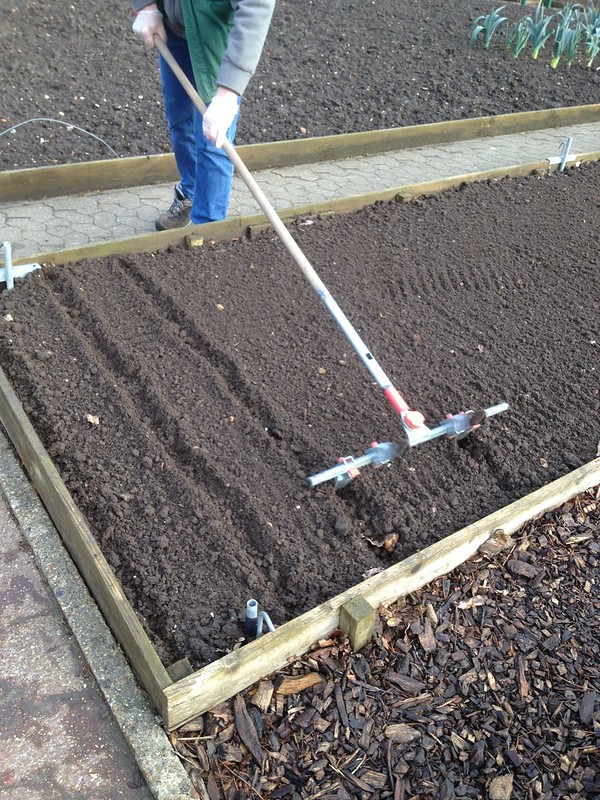 | 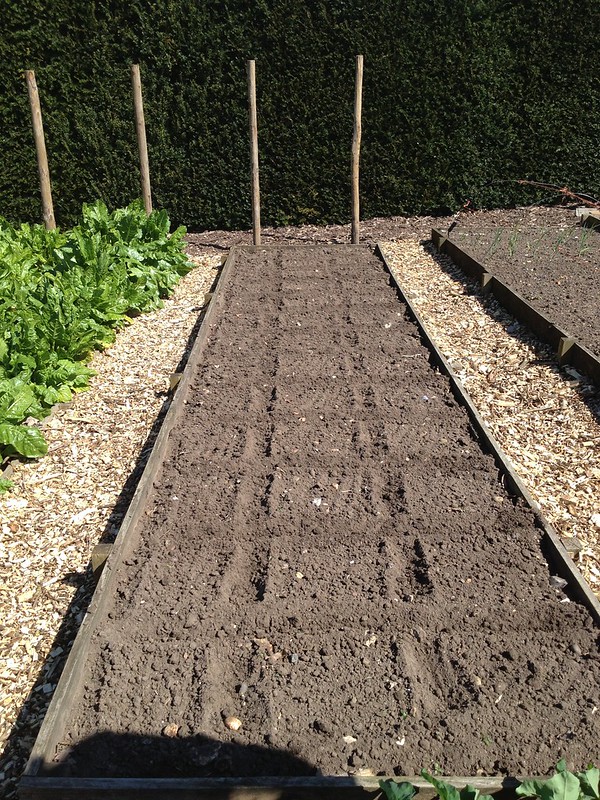 |
| Rows to sow | Grids to plant out |
A meter stick is a further help with sowing or planting out where you want precise spacing.
In the photo below are some shallots we sowed with a stick.
Radishes
Summer radishes are sown 1-1.5 cm deep, at 1 cm spacing (thinned to 5 cm), with and 20 between rows (15 in a greenhouse); one shouldn't water seedbed until germination. In summer, if the soil is dry, water the drill before sowing the seeds to create a microclimate for them to germinate but not the surrounding soils.
There are two type of summer radishes: rosette leaves (ideal for early sowing, require
lower light levels) for example 'Rudi', 'Scarlet Globe' and tuft leaves (ie 'French Breakfast') which are best sown towards the end of March. If you sow them too late they go straight to flower; the same happens if you don't thin them out.
Winter radishes you sow beginning of summer to Aug, they are ready Sep to
Nov, some like mooli, also know as daikon, overwinter but require wider spacing, at least 30 cm and 30 cm between rows.
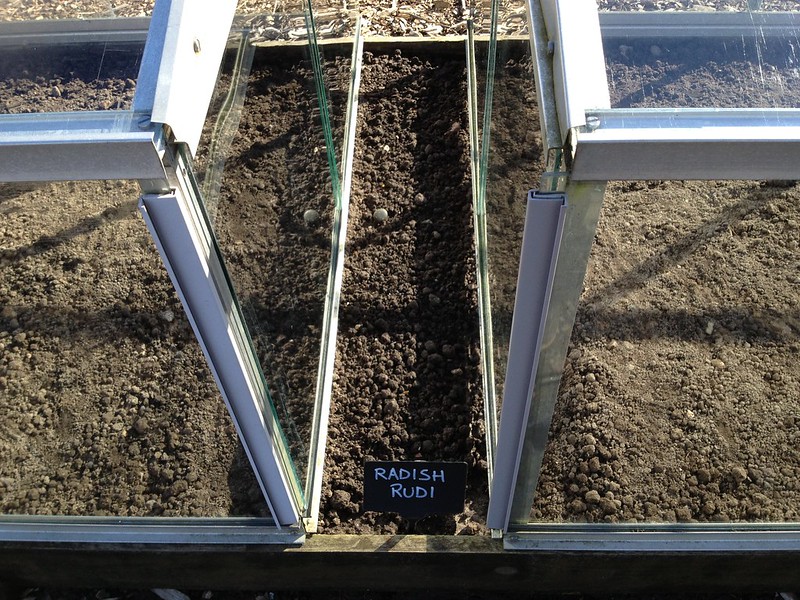 |
| 2 March |
 |
| 13 March, thinning out |
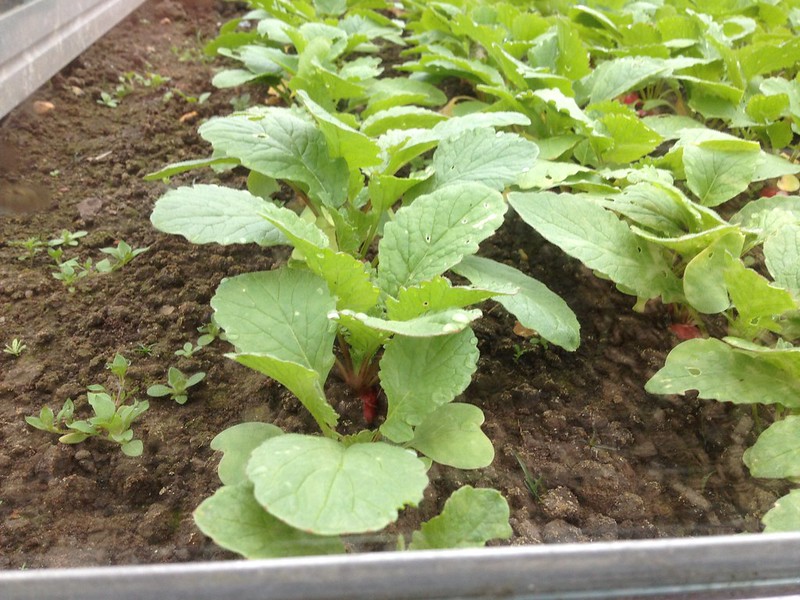 |
| 13 April |
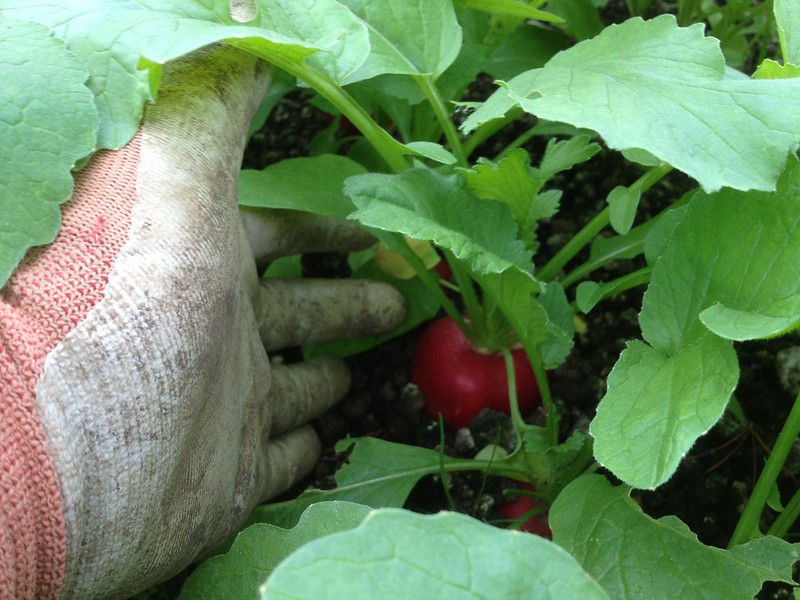 |
| 30 April |
Spinach
Spinach is sown at 2.5-3 cm, then thinned straight away to 5 cm. Depending how big you want your plants, you can also decide to harvest one in every two plants as baby leaf. Mind you leave 30 cm between rows.
Spinach is very sensitive to day length so pay attention: there are early sowing (flowering on longer days) and late sowing varieties (that can be sown both spring and autumn, as they are flowering on shorter days).
 |
| 2 March |
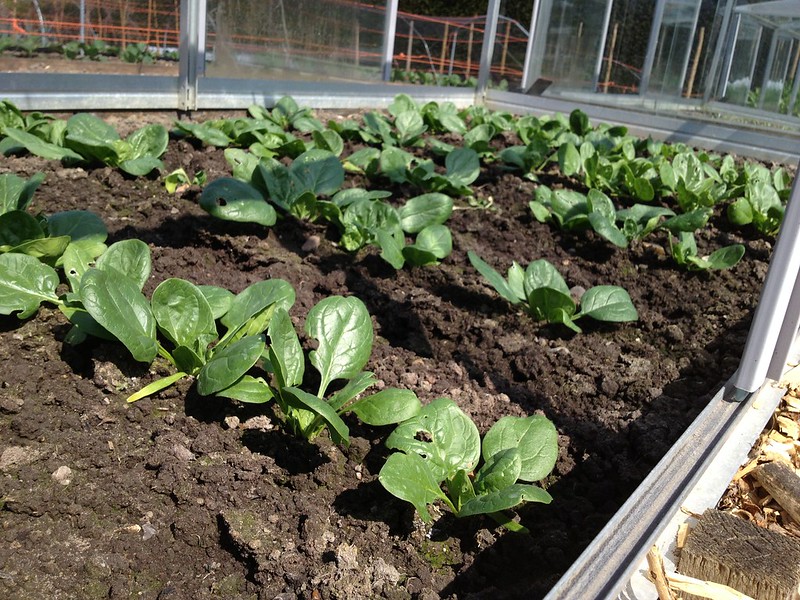 |
| 20 April, thinning out |
 |
| 13 April |
Beetroot
Beetroot is for sowing April to June, but a few varieties that do not bolt if they get cold (ie 'Boltardy') can be sown earlier.
Spacing: 5 cm (seeds are in a cluster) and 30 cm in between rows. They require
thinning by snipping off any extra seed in the cluster that germinates.
 |
| 2 March |
 |
| 20 April, thinning out, poor germination |
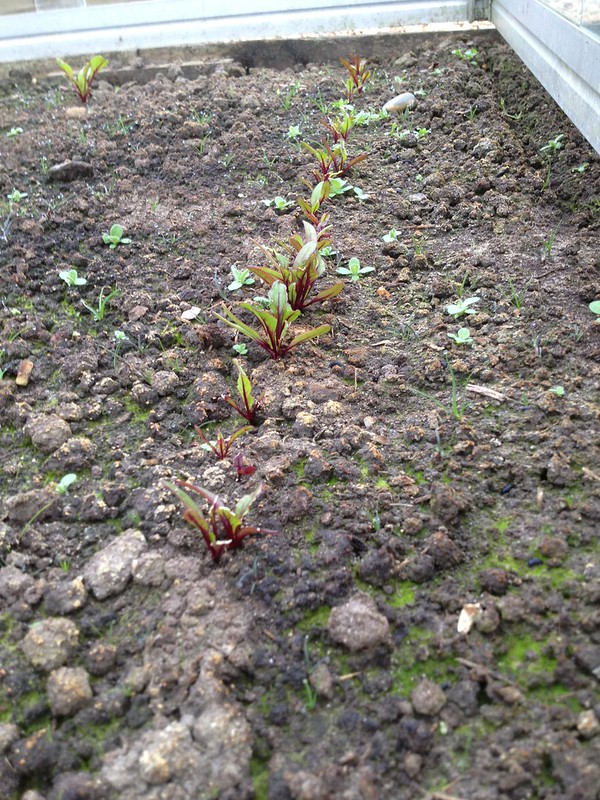 |
| 13 April |
Carrots
Carrot 'Marion' is very good for growing all year round even if its flavour is not perfect, but aside from that variety carrots are either early maincrop or late.
Carrots seeds are very thin, and difficult to handle. Taking only a small pinch at the time helps with getting the right sowing spacing, which is 1 cm by 30 cm.
Because of the risk of carrot fly (Psila rosae) attack, early maincrop carrots are covered at sowing, only uncovered once for thinning out, then covered again until picking, which is done in one go. However, since the carrot fly is not around in autumn,
overwintering carrot can be picked as needed.
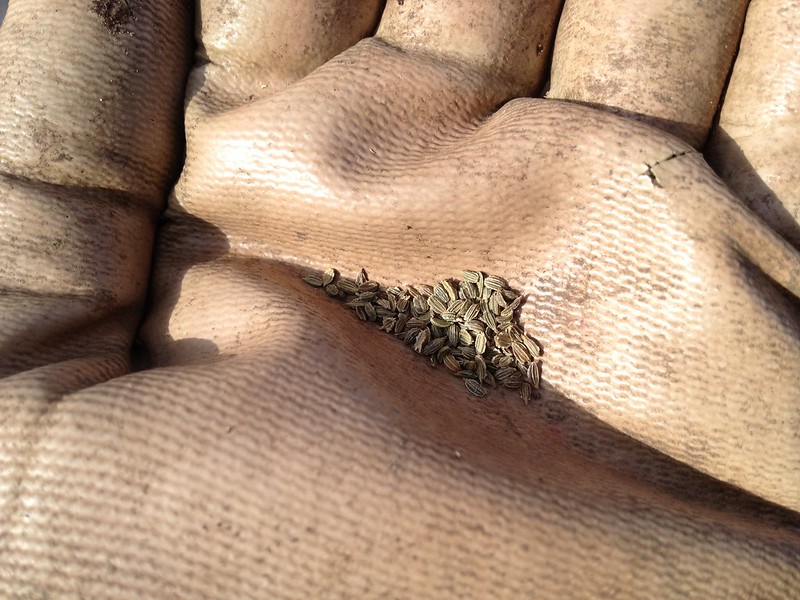 |
| 19 March |
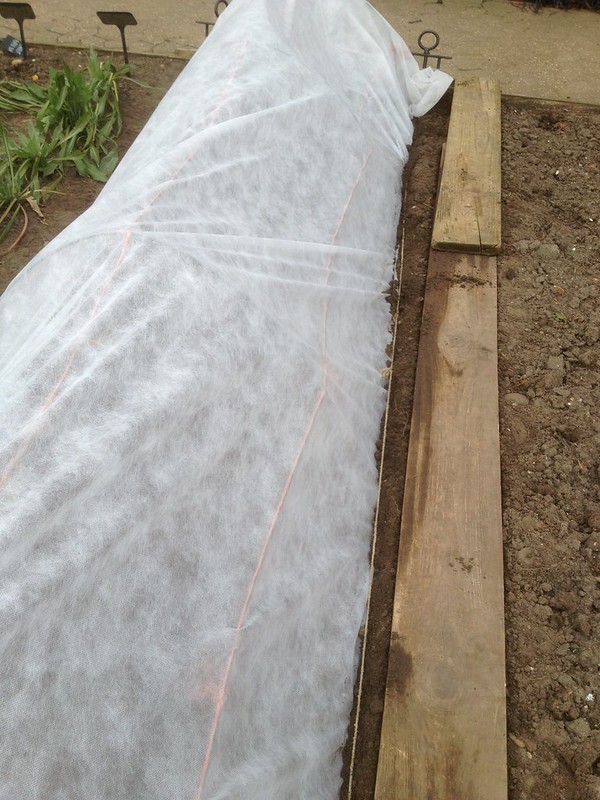 |

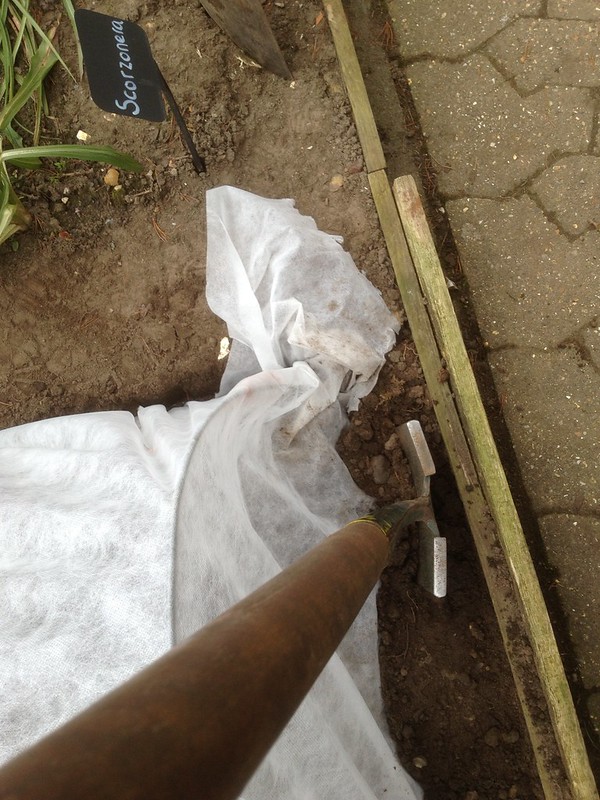 |
 |
| Fleecing the carrots against carrot fly |
 |
| 30 April thinning out, uncovering |
Broad beans
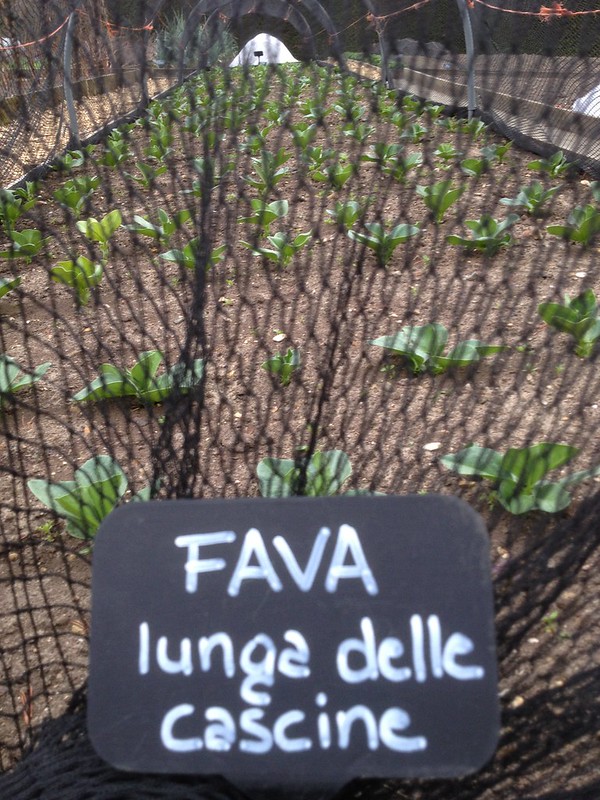 |
| Sown in the first week of March, took about a month to germinate |
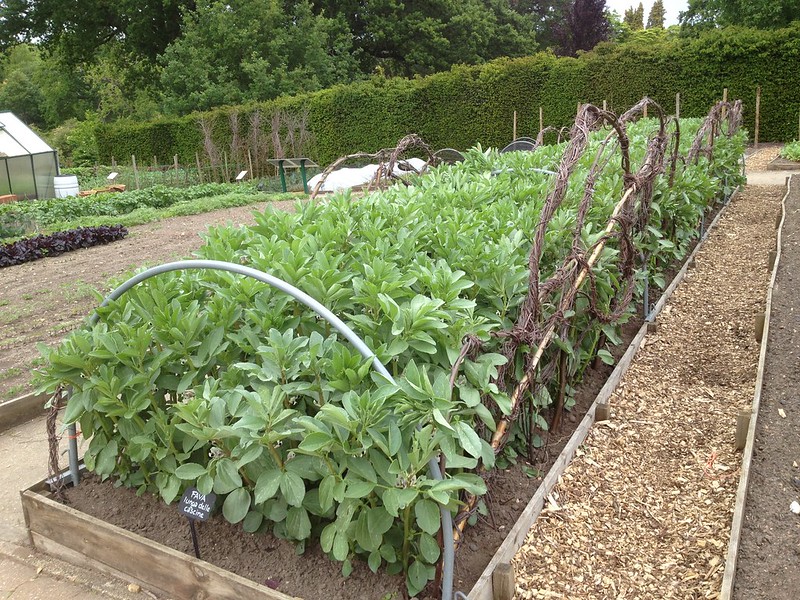 |
| 25 May |
N.B. A good rule for sowing different crops next to each other: the space between them should be calculated as space of crop 1 + space of crop 2 divided by 2!
Thinning out
I have never practised thinning out before, so this was a new skill for me. You have to choose the strongest seedlings that grow round about the desired distance you, then pull out the in-between ones. However, if you are too late and do thin when the seedlings have a well developed root system already, or in the case of seeds in cluster (like with beetroot), you have to snip the competitors off rather than pulling them out, so as not to disturb the roots of the ones you want to keep.
Once you have done your thinning, it is best practice to firm the remaining seedlings in the row, by earthing them up slightly from the sides, then watering them well.
Planting out
Several crops are grown in the propagation facilities and then planted out, ie all the brassicas and the lettuces. Planting them out has its own requirements.
One of the most interesting things I learnt while here is that some crops like to be planted at the same level they were in the pot, even if they flop when planted (for example brassicas and lettuces). Others instead need firming in, for example celery, which is also planted close together to provide a minimum blanching effect, even though modern varieties are self-blanching and do not need to be earthed up or otherwise be covered.
Brassicas
Brassicas like firm soil around them, and the taller the brassica, the firmer the soil needs to be. Brassicas need cabbage collars to keep the
cabbage root fly (Delia radicum) at bay (if kept soil free, they form a dry environment that desiccates any eggs laid on them, while in the process helping to slow down slugs).
Covering is also required from the
cabbage white caterpillar (Pieris spp). However, brassicas requires a lot of light and netting shades them, so we used netting with large holes, pulled taut so that butterflies cannot squeeze in!
 |
| 14 April, cauliflowers |
 |
 |
| 13 Apr, cabbages | 28 April, covered |
Lettuces
I did plant quite a lot of lettuce, so I now feel rather confident. It is generally grown in jiffy's here, planted out when the seedlings are about 10 cm tall. You need to water them well to start with, peel off the ridge of the pot, then plan them at soil level, having loosened the soil well (for example with a bulb planter) before firming gently. As usual, then you finish with watering.
 |
 |
| 13 April | 20 April |
 |
| 28 Apr |


























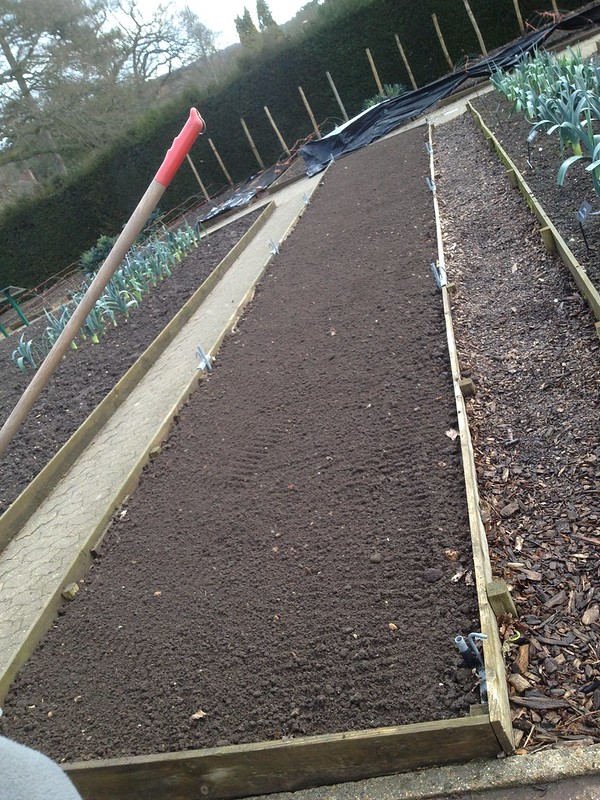
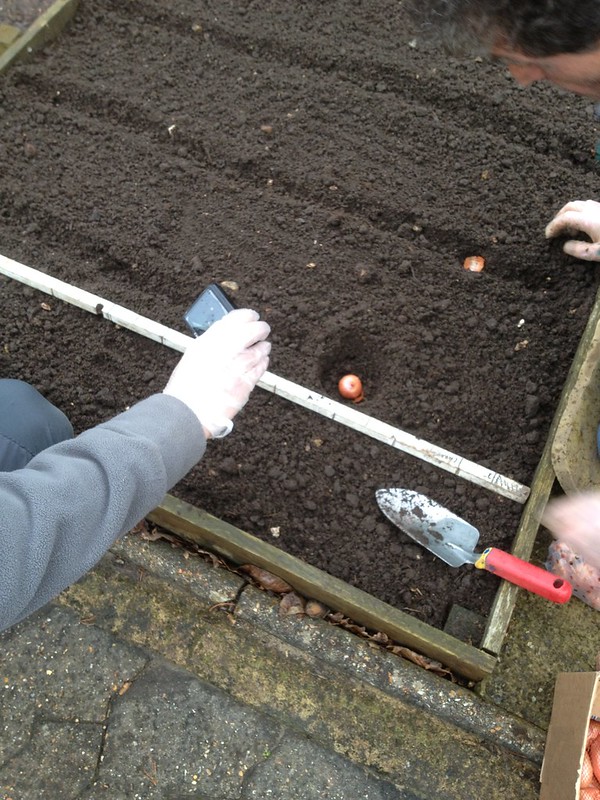
No comments:
Post a Comment